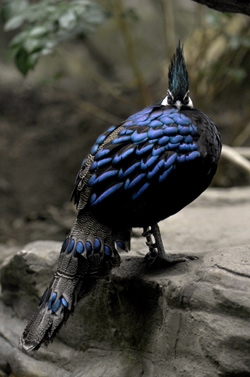Palawan’s wildlife faces extinction risk due to mining, pet trade
Palawan’s wildlife faces extinction risk due to mining, pet trade
Jeremy Hance, mongabay.com
September 17, 2008
|
|
Scientists warn that species on the Philippine island of Palawan are rapidly headed toward extinction due to habitat loss and the illegal wildlife trade. Last week ornithologist Aldrin Mallari presented a paper showing that all of Palawan’s endangered species inhabit lowland forest, according to an article in the Philippine Daily Inquirer. Lowland forest has been largely converted to agriculture, whereas areas above a thousand meters have government protection.
By placing all their hopes on highland rainforest, Mallari believes that Palawan is risking many species. Mining is the major threat to Palawan wildlife in the remaining lowland forests according to Mallari. The ornithologist noted that it is easier to obtain a mining permit than a permit for scientific study. Even with the number of mining permits granted, illegal mining still occurs.
The wildlife trade poses an additional threat to Palawan’s endangered species, including the islands flagship species, the Philippine Cockatoo. Abundant before 1980 the cockatoo’s population plummeted due to habitat destruction and capture for the pet trade according to the Katala Foundation, a group that works to protect Palawan’s endangered birds. Currently the Philippine Cockatoo is listed as critically endangered in the IUCN Red List. The Katala Foundation said that Palawan contains 13 mammals and 11 birds threatened by illegal trading. Many of the birds end up as pets in the U.S.
 Photoby Julie Larsen Maher © WCS. |
Palawan is home to 232 endemic species, one of the highest densities of unique species anywhere in the world. Some notables are the pilandok, or Philippine mouse deer, which lives in a small island off the southern coast of Palawan; the strange Palawan bearcat, an arboreal nocturnal mammal; and the Palawan hornbill, classed as Vulnerable by the IUCN. Many of these species are at risk should the lowland forests of Palawan be lost.
The threats to Palawan’s biodiversity and ecosystems come despite the island’s reputation as a pioneer in conservation. The island retains 56 percent total forest cover — concentrated in mountainous areas that are difficult to log and unsuitable for agriculture — and the entire island is classified as a game reserve, meaning that all hunting is illegal. Nevertheless, despite its history of strong conservation initiatives, many scientists and NGOs increasingly worry that some of Palawan’s most endangered wildlife won’t be around for much longer.
Related
New shrew species, orchid discovered in the Philippines August 10, 2007
An unknown shrew species has been discovered on Palawan, a large island in the Philippines, by a Conservation International-led expedition.